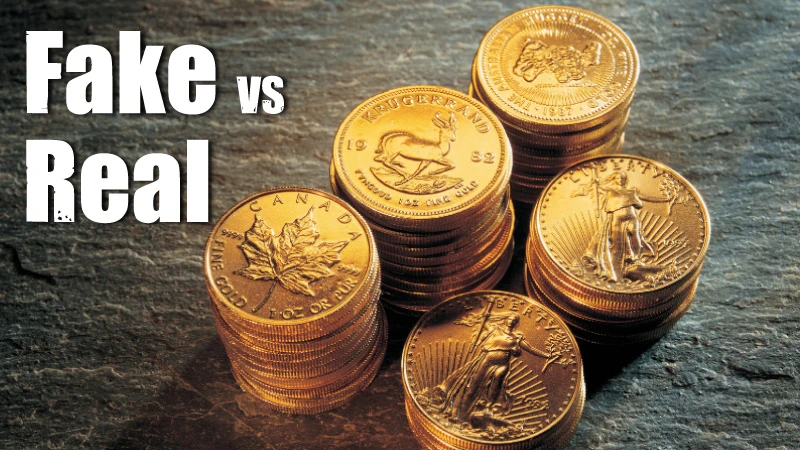In an age where counterfeiting has evolved into a sophisticated art, distinguishing real gold coins from their counterfeit counterparts has become increasingly challenging. Collectors and investors alike must arm themselves with knowledge and keen observation to ensure their acquisitions are genuine. This comprehensive guide delves into the nuances of spotting fake gold coins, empowering you to safeguard your investments and collections. Whether you’re browsing gold coins for sale online or at auctions, understanding these detection techniques is crucial for making informed decisions and preserving the integrity of your numismatic or investment portfolio.
The Golden Allure: Why Counterfeiting Thrives
Gold coins have long been prized for their beauty, rarity, and intrinsic value. Their historical significance and the metal’s economic stability make them highly desirable, not just to collectors and investors, but also to counterfeiters. The high value of gold and the relative ease with which modern technology can produce convincing replicas make gold coins a prime target for fraud. Understanding the reasons behind counterfeiting underscores the importance of vigilance and informed purchasing.
The Key Characteristics of Genuine Gold Coins
Authentic gold coins are meticulously crafted, with distinct features that counterfeiters often struggle to replicate accurately. Here are the primary characteristics to consider:
Weight and Size
Gold is a dense metal, and genuine gold coins have a specific weight and size. Any deviation from the expected dimensions can be a red flag. Use a precise scale to measure the weight and a caliper for the diameter and thickness. Comparing these measurements with the official specifications of the coin can quickly reveal inconsistencies.
Sound Test
The sound test, or “ping” test, involves striking the coin gently and listening to the sound it produces. Real gold coins emit a high-pitched, clear tone due to the metal’s density and composition. Counterfeit coins, especially those made from base metals, produce a duller sound.
Magnetism
Gold is non-magnetic. If a coin is attracted to a magnet, it is not pure gold. This simple test can immediately disqualify coins made from magnetic metals, which are often used in counterfeits.
Visual Inspection
Examining the coin under magnification can reveal discrepancies. Look for:
- Details and Mint Marks: Authentic coins have sharp, intricate details, and consistent mint marks. Blurry or uneven designs indicate forgery.
- Edges: Genuine coins have finely milled or reeded edges, while fake coins might have irregular or poorly defined edges.
- Color: Real gold has a distinct yellow luster. Variations in color can suggest the presence of other metals.
Advanced Techniques for Verification
While the basic tests can identify many counterfeits, advanced methods provide further assurance:
Specific Gravity Test
This test measures the density of the coin by comparing its weight in air and in water. The specific gravity of gold is 19.3, and significant deviations from this value suggest the coin is not pure gold.
X-Ray Fluorescence (XRF) Analysis
XRF is a non-destructive analytical technique used to determine the elemental composition of a material. It can identify the precise metals present in a coin, confirming its authenticity. Many reputable dealers and numismatists use XRF devices for on-the-spot verification.
Ultrasonic Thickness Testing
This method uses sound waves to measure the thickness of a coin. It can detect inconsistencies in thickness that are not visible to the naked eye, revealing hidden layers or cores of different metals.
Dealing with Dealers: Ensuring Trustworthiness
Purchasing gold coins from reputable sources is paramount. Here are some tips to ensure you’re dealing with trustworthy sellers:
Verify Credentials
Reputable dealers should have certifications from recognized numismatic organizations, such as the Professional Numismatists Guild (PNG) or the American Numismatic Association (ANA). These credentials indicate a commitment to ethical standards and industry knowledge.
Research Dealer Reputation
Look for reviews and ratings from other customers. Consistent positive feedback and a long-standing presence in the market are good indicators of reliability.
Request Documentation
Legitimate dealers provide detailed receipts and certificates of authenticity. These documents should include the coin’s specifications, provenance, and any guarantees.
The Role of Professional Appraisers
If you’re uncertain about the authenticity of a coin, consulting a professional appraiser can provide peace of mind. Appraisers use a combination of experience, advanced tools, and industry knowledge to assess the value and authenticity of coins accurately. They can also offer guidance on building and maintaining a collection.
Staying Informed: Continuing Education and Resources
The world of numismatics is ever-evolving, with new counterfeiting techniques constantly emerging. Staying informed is crucial for collectors and investors. Here are some ways to keep up-to-date:
Join Numismatic Associations
Organizations like the ANA offer resources, educational programs, and networking opportunities. Membership can provide access to exclusive publications, seminars, and expert advice.
Attend Coin Shows and Expos
Coin shows are excellent venues to learn, buy, sell, and network with other enthusiasts and professionals. They offer a hands-on opportunity to compare coins, meet reputable dealers, and attend educational sessions.
Utilize Online Resources
Numerous websites and forums are dedicated to numismatics. Sites like CoinWeek, Coin World, and the Numismatic Guaranty Corporation (NGC) provide articles, news, and forums where collectors share their experiences and insights.
Conclusion: Guarding Your Golden Investments
In the glittering world of gold coins, the threat of counterfeits is ever-present. By equipping yourself with knowledge and utilizing both basic and advanced verification techniques, you can confidently navigate the market. Remember to deal only with reputable sellers, seek professional appraisals when in doubt, and stay informed about the latest developments in numismatics. Investing in gold requires vigilance and expertise, ensuring you protect your investments and enjoy the rich rewards of collecting genuine gold coins. This approach not only safeguards your financial assets but also enhances your appreciation for the historical and artistic value of authentic gold coins.



